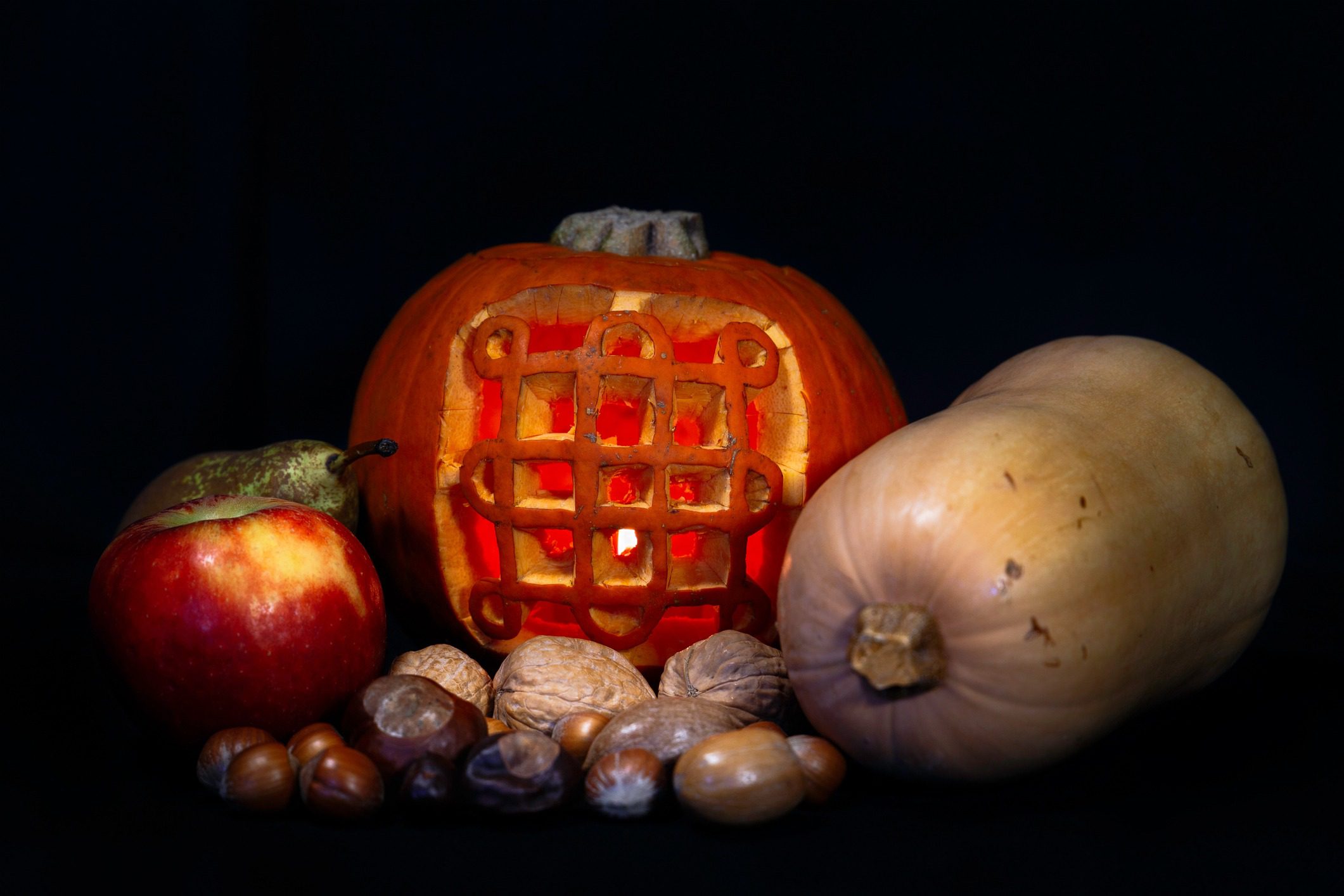
Halloween is the favourite holiday of many people all over the world, and its origins can be traced back to ancient traditions. It has, however, been deeply influenced by a traditional Celtic harvest festival: Samhain, where the boundary between this world and the Otherworld could be more easily crossed.
In the UK, at least, Halloween is the last big holiday holding back Christmas’ encroachment even earlier into the year (though it doesn’t seem to be stopping supermarkets stocking advent calendars in September!) and is fun for children and adults alike. Halloween—or Hallowe’en—takes its name from All Hallow’s Eve, the night before All Saints’ Day; so, the 31st October.
However, Halloween’s origins can be traced back to the ancient Celtic festival of Samhain—and this includes everything from the date to trick-or-treating, which was carried across to the USA by Scottish and Irish migrants centuries ago.
Beltane vs. Samhain
Samhain (check out how to pronounce it here!) is one of two big Celtic festivals that are still celebrated today; the other is Beltane, which is celebrated around the 1st May. Taking place on the 31st October, Samhain is around halfway between the autumnal equinox and winter solstice, and celebrates the end of the harvest and the entrance into the ‘darker half’ of the year.
Beltane, in comparison, takes part halfway between the spring equinox and summer solstice, celebrating entrance into the ‘lighter half’ of the year. It was also, traditionally, when cattle were driven out to their summer pastures.
Both festivals were also celebrated with the lighting of bonfires; though these are no longer held in every village, they can still be seen in several major cities that are participating in Samhain celebrations. The bonfires were believed to be protective and have cleansing powers—especially important for Samhain, where it was also believed that the barrier between the world of the living and the world of the dead was thinner and that the souls of the dead were returning home.
To Mexico and back!
Of course, anyone who knows anything about the Día de Muertos, or Day of the Dead, will notice the similarities between that festival and Samhain. Día de Muertos begins on 31st October, but is a multi-day holiday, lasting until 2nd November, where families gather to support their dead relatives on their journey with prayer, offerings, and remembrance.
Before Spaniards arrived in Mexico, however, Día de Muertos was actually celebrated at the beginning of summer and shifted over time to coincide with the Christian holidays of All Saints’ Eve, All Saints’ Day, and All Souls’ Day. Similarly to Samhain, Día de Muertos can trace its roots back to indigenous observances and an Aztec festival which was dedicated to the goddess Mictēcacihuātl, who was queen of the underworld.
Back to Samhain…
Aside from the bonfires, there were other rituals historically associated with Samhain that have survived into modern Halloween celebrations today.
Guising: This was part of Samhain from at least the 16th century and involved children dressing up and going house to house to receive a gift, usually of apples or nuts—but in more recent times, this has of course included chocolate. The key difference between guising and the modern-day tradition of trick-or-treating is that, when guising, the children are supposed to receive their gifts in exchange for performing a ‘trick,’ so, singing a song or reciting a poem, for example. Nowadays, children don’t have to perform, and it’s common in Scotland or Ireland (and the rest of the UK, for that matter!) for them to say, “Trick or treat,” too!
Playing tricks: Although children going guising wouldn’t say, “Trick or treat,” this doesn’t mean they didn’t play tricks—in some places, Samhain was even nicknamed ‘Mischief Night.’ Playing tricks happened in the Scottish Highlands as far back as 1736 and was a strong tradition by the time mass emigration into the USA happened from Scotland and Ireland, meaning that this is likely where trick-or-treating originated.
Dooking for apples: This is also known as ‘apple bobbing’ in other parts of the UK, and most often takes place on Halloween at childrens’ parties. Apples are placed into a large bowl of water, where they float to the top; the children (or adults, if they’re playing, too!) have to keep their hands behind their backs and try and catch an apple with their mouths. Apple bobbing was actually brought over by the Romans, but mixed into Celtic traditions, including Samhain and, later, Halloween.
Pumpkin carving: In some areas, when guisers went out on Samhain, they would take with them a lantern to light the way. Turnips or mangel wurzels would be carved into grotesque faces and lit from within—and, like the modern-day jack-o-lantern, they might also be set on windowsills. The turnip lanterns were said by some to represent spirits and supernatural beings and by others to ward off evil spirits. Either way, they spread throughout England during the 20th century and are a staple of Halloween today!
Talking about Halloween
So, those are some Samhain traditions that have survived to be represented in Halloween today, but how can you talk about Halloween, especially in Scottish Gaelic? We’ve put together a list of vocabulary that you could try out this Samhain!
- Halloween – Oidhche
- witch – bana-bhuidseach
- ghost(s) – taibhse(an)
- monster – uilebheist
- owl – cailleach-oidhche
- bat – ialtag
- spider – damhan-allaidh
- skull – claigeann
- dark – dorcha
- pumpkin – peapag
- turnip – tuineap / snèap
And here’s two useful phrases:
Cleas no tiodhlac! – Trick or treat!
Oidhche Shamha shona dhut! – Happy Halloween!
What else do you know about Samhain? Or Scottish Gaelic, for that matter? Let us know on Facebook or Twitter—and if you don’t know much or just want to learn more, then download our app and you can start learning Scottish Gaelic today!
Oh, and Sona Samhain, everyone! Happy Samhain!